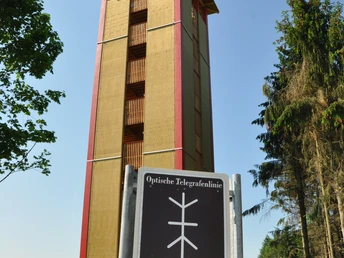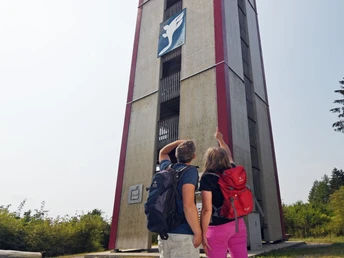- 4:44 h
- 17.86 km
- 246 m
- 207 m
- 157 m
- 323 m
- 166 m
- Start: At telegraph station no. 32 near Oeynhausen
- Destination: At telegraph station no. 30 on the Hungerberg near Marienmünster-Vörden
In 1833, the Prussian government issued an order to build an optical telegraph line from Berlin to Koblenz in order to provide a fast communication link. The telegraph line, which went into operation in 1834, consisted of 62 stations in particularly favorable topographical locations. A characteristic feature was the high mast with three double arms visible from afar. With the help of these so-called indicators, 1.5 to 2 characters per minute were transmitted to the next station, which was between 7.5 and 15 km away and usually located on a mountain. However, operation had to be stopped in fog or rain. After just 15 years, the entire optical telegraph line was shut down because electric telegraphy had been invented. The telegraph stations were demolished.
Newly erected observation towers at stations no. 30 and 32 provide a "view" of communication at that time. The rebuilt station no. 32 offers an insight into the life of the telegraph operator.Waypoints
Good to know
Pavements
Best to visit
Directions
Tour information
Stop at an Inn
Directions & Parking facilities
Start at the hiking parking lot on the L755 (entrance to the Bilster Berg test track). Follow the N2a to the telegraph station
.At the end point: parking lot at Marienmünster Abbey or parking lot in the center of Marienmünster-Vörden.
Author´s Tip / Recommendation of the author
Map












